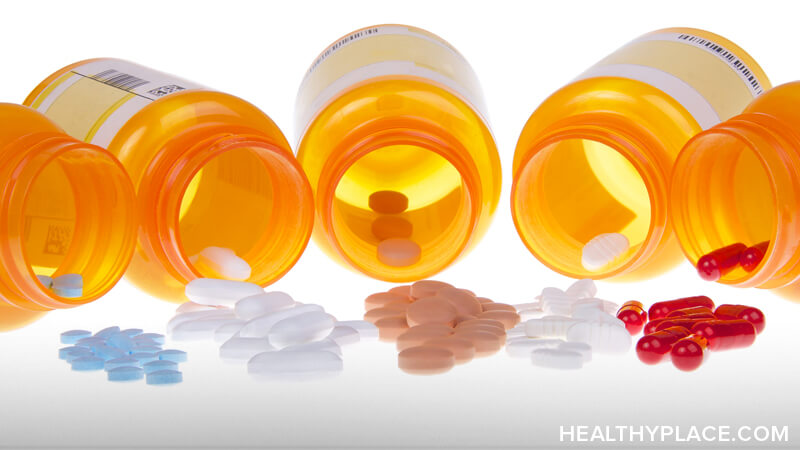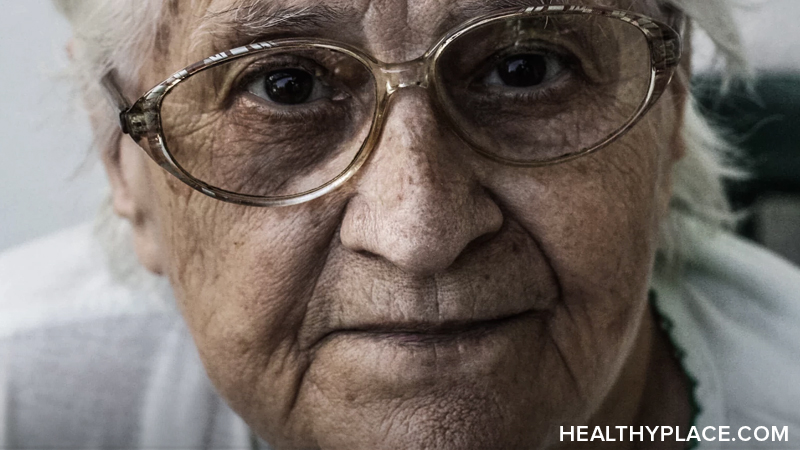Financial Help for Diabetes Treatment

Diabetes treatment and management isn't cheap. Do you need help paying for diabetes treatment? Financial assistance is available.
Where to Get Financial Assistance to Pay for Diabetes Treatment
Diabetes treatment is expensive. According to the American Diabetes Association, people with diabetes spend an average of $11,744 a year on health care expenses—more than twice the amount spent by people without diabetes.
Many people who have diabetes need help paying for their care. For those who qualify, a variety of governmental and nongovernmental programs can help cover health care expenses. This publication is meant to help people with diabetes and their family members find and access such resources.
On this page:
- Medicare
- Medicaid
- State Children's Health Insurance Program (SCHIP)
- Health Insurance for Those Not Eligible for Medicare or Medicaid
- Health Insurance after Leaving a Job
- Health Care Services
- Hospital Care
- Kidney Disease: Resources for Dialysis and Transplantation
- Prescription Drugs and Medical Supplies
- Prosthetic Care
- Classroom Services
- Technological Assistance
- Food and Nutrition Assistance for Women with Diabetes or Gestational Diabetes
- Social Security Disability Insurance (SSDI) and Supplemental Security Income (SSI) Benefits
- Local Resources
- Acknowledgments
- National Diabetes Education Program
Medicare
Medicare is federal health insurance for the following groups:
- people 65 or older
- people younger than 65 with certain disabilities or amyotrophic lateral sclerosis (ALS), also called Lou Gehrig's disease
- people of any age with end-stage renal disease—permanent kidney failure requiring dialysis or a kidney transplant
Medicare Health Plans
People with Medicare can choose how to get their health and prescription drug coverage. The following options are available:
- Original Medicare
- Medicare Advantage Plans—such as health maintenance organizations (HMOs) or preferred provider organizations (PPOs)
- other Medicare health plans
Original Medicare. Original Medicare, managed by the Federal Government, has two parts: Medicare Part A is hospital insurance and Medicare Part B is medical insurance. People in this plan usually pay a fee for each health care service or supply they receive.
People who are in Original Medicare can add prescription drug coverage—Medicare Part D—by joining a Medicare Prescription Drug Plan. These plans are run by insurance companies and other private companies approved by Medicare.
People can also choose to buy insurance to help fill the gaps in Part A and Part B coverage. This insurance is known as Medigap or Medicare Supplement Insurance.
Medicare Advantage Plans. Medicare Advantage Plans are health plan options, like an HMO or PPO, approved by Medicare and offered by private companies. These plans are part of Medicare and are sometimes called Part C or MA Plans. Medicare Advantage Plans provide Medicare Part A and Part B coverage and usually Medicare Part D coverage. The companies that run these plans must follow rules set by Medicare. Not all Medicare Advantage Plans work the same way. People considering one of these plans should find out the plan's rules before joining.
Other Medicare Health Plans. Other Medicare health plans include Medicare Cost Plans, Demonstrations/Pilot Programs, and Programs of All-Inclusive Care for the Elderly (PACE). These plans provide hospital and medical insurance coverage, and some also provide prescription drug coverage.
Medicare Covers Diabetes Services and Supplies
Original Medicare helps pay for the diabetes services, supplies, and equipment listed below. Coinsurance or deductibles may apply. In addition, Medicare covers some preventive services for people who are at risk for diabetes. A person must have Medicare Part B or Medicare Part D to receive these covered services and supplies.
Medicare Part B helps pay for
- diabetes screening tests for people at risk of developing diabetes
- diabetes self-management training
- diabetes supplies such as glucose monitors, test strips, and lancets
- insulin pumps and insulin if used with an insulin pump
- flu and pneumonia shots
- foot exams and treatment for people with diabetes
- eye exams to check for glaucoma and diabetic retinopathy
- medical nutrition therapy services for people with diabetes or kidney disease, when referred by a doctor
- therapeutic shoes or inserts, in some cases
Medicare Part D helps pay for
- diabetes medicines
- insulin, but not insulin used with an insulin pump
- diabetes supplies like needles and syringes for injecting insulin
People who are in a Medicare Advantage Plan or other Medicare health plan should check their plan's membership materials and call for details about how the plan provides the diabetes services, supplies, and medicines covered by Medicare.
More details are available by calling 1-800-MEDICARE (1-800-633-4227) and requesting the free booklet Medicare Coverage of Diabetes Supplies & Services.
More Information about Medicare
More information about Medicare is available at www.medicare.gov, the official U.S. Government website for people with Medicare. The website has a full range of information about Medicare including free publications like Medicare & You, the official Government handbook about Medicare, and Medicare Basics—A Guide for Families and Friends of People with Medicare. Through the Medicare website, people can also
- find out if they are eligible for Medicare and when they can enroll
- learn about their Medicare health plan options
- find out what Medicare covers
- find a Medicare Prescription Drug Plan
- compare Medicare health plan options in their area
- find a doctor who participates in Medicare
- get information about the quality of care provided by nursing homes, hospitals, home health agencies, and dialysis facilities
Calling 1-800-MEDICARE (1-800-633-4227) is another way to get help with Medicare questions, order free publications, and more. Help is available 24 hours a day, every day, and is available in English, Spanish, and other languages. TTY users should call 1-877-486-2048.
Medicare information can also be obtained from the following agencies or programs:
- Each state has a State Health Insurance Assistance Program (SHIP) that provides free health insurance counseling. A state's SHIP may have a unique name. SHIP counselors can help people choose a Medicare health plan or a Medicare Prescription Drug Plan. The phone number for the SHIP in each state is available by calling Medicare or visiting www.medicare.gov and selecting "Find Helpful Phone Numbers and Websites" under "Search Tools."
- The Social Security Administration can provide information about eligibility for Medicare. People can contact the agency at 1-800-772-1213, visit its website at www.socialsecurity.gov, or check with their local Social Security office to learn if they are eligible for Medicare.
- State Medical Assistance (Medicaid) offices in each state can provide information about help for people with Medicare who have limited income and resources. The phone number for each state's Medicaid office can be obtained by visiting www.medicare.gov or calling Medicare.
People who enroll in Medicare can register for MyMedicare.gov, a secure online service, and use the site to access their personal Medicare information at any time. People can view their claims, order forms and publications, and see a description of covered preventive services.
Help for Diabetics with Medicare Who Have Limited Income and Resources
Diabetics who have Medicare and have limited income and resources may qualify for help paying for some health care and prescription drug costs from one of the following programs:
- Extra help paying for Medicare prescription drug coverage. Those who meet certain income requirements may qualify for extra help from Medicare to pay prescription drug costs. People can apply for this help by calling Social Security; visiting www.socialsecurity.gov to apply online; visiting their local Social Security office; or by contacting their State Medical Assistance (Medicaid) office. Each state's SHIP can provide information and answer questions about this program.
- State pharmacy assistance programs (SPAPs). Several states have SPAPs that help certain people pay for prescription drugs. Each SPAP makes its own rules about how to provide drug coverage to its members. Information about each state's SPAP can be obtained by calling Medicare or the state's SHIP.
- Medicaid programs for people with Medicare. State Medicaid programs help pay medical costs for some people with Medicare who have limited income and resources. People who qualify for both Medicare and Medicaid may get coverage for services that aren't fully covered by Medicare, such as nursing home and home health care. States also have programs called Medicare Savings Programs that pay Medicare premiums and, in some cases, may also pay Medicare Part A and Part B deductibles and coinsurance. More information is available at www.medicare.gov. The phone number for the State Medical Assistance (Medicaid) office for each state can be obtained by calling Medicare. Each state's SHIP can also provide more information.
Medicaid
Medicaid, also called Medical Assistance, is a joint federal and state government program that helps pay medical costs for some people with limited income and resources. Medicaid programs and income limits for Medicaid vary from state to state. The State Medical Assistance (Medicaid) office can help people find out whether they qualify for Medicaid or provide more information about Medicaid programs. To contact a state Medicaid office, people can
- visit "Find Helpful Phone Numbers and Websites" or call 1-800-MEDICARE (1-800-633-4227) and say "Medicaid"
- check the government pages of the phone book for the local department of human services or department of social services, which can provide the needed information
State Children's Health Insurance Program (SCHIP)
SCHIP is a federal and state government partnership to expand health coverage to uninsured children from families with income that is too low to afford private or employer-sponsored health insurance but too high to qualify for Medicaid. Free or low-cost coverage is available to eligible children younger than 19.
SCHIP provides an extensive package of benefits including doctor visits, hospital care, and more. Information about the program is available at www.insurekidsnow.gov or by calling 1-877-KIDS-NOW (1-877-543-7669). Callers to the toll-free, confidential hotline are automatically connected to their state's program.
Health Insurance for Those Not Eligible for Medicare or Medicaid
People who are not eligible for Medicare or Medicaid may be able to purchase private health insurance. Many insurers consider diabetes that has already been diagnosed a pre-existing condition, so finding coverage may be difficult for people with diabetes. Insurance companies often have a specific waiting period during which they do not cover diabetes-related expenses for new enrollees, although they will cover other medical expenses that arise during this time.
Certain state and federal laws may help. Many states now require insurance companies to cover diabetes supplies and education. The Health Insurance Portability and Accountability Act (HIPAA), passed by Congress in 1996, limits insurance companies from denying coverage because of a pre-existing condition. Information about HIPAA is available at www.dol.gov/dol/topic/health-plans/portability.htm.
More information about these laws is available from each state's insurance regulatory office. Some state offices may be called the state insurance department or commission. This office can also help identify an insurance company that offers individual coverage. The National Association of Insurance Commissioners' website, www.naic.org/state_web_map.htm, provides a membership list with contact information and a link to the website for each state's insurance regulatory office.
Health Insurance after Leaving a Job
When leaving a job, a person may be able to continue the group health insurance provided by the employer for up to 18 months under a federal law called the Consolidated Omnibus Budget Reconciliation Act, or COBRA. People pay more for group health insurance through COBRA than they did as employees, but group coverage is cheaper than individual coverage. People who have a disability before becoming eligible for COBRA or who are determined by the Social Security Administration to be disabled within the first 60 days of COBRA coverage may be able to extend COBRA coverage an additional 11 months, for up to 29 months of coverage. COBRA may also cover young people who were insured under a parent's policy but have reached the age limit and are trying to obtain their own insurance.
More information is available by calling the U.S. Department of Labor at 1-866-4-USA-DOL (1-866-487-2365) or visiting www.dol.gov/dol/topic/health-plans/cobra.htm.
If a person doesn't qualify for coverage or if COBRA coverage has expired, other options may be available:
- Some states require employers to offer conversion policies, in which people stay with their insurance company but buy individual coverage.
- Some professional and alumni organizations offer group coverage for members.
- Some insurance companies also offer stopgap policies designed for people who are between jobs.
Each state insurance regulatory office can provide more information about these and other options. The National Association of Insurance Commissioners' website, www.naic.org/state_web_map.htm, provides a membership list with contact information and a link to the website for each state's insurance regulatory office. Information about consumer health plans is also available at the U.S. Department of Labor's website at www.dol.gov/dol/topic/health-plans/consumerinfhealth.htm.
Health Care Services
The Bureau of Primary Health Care, a service of the Health Resources and Services Administration, offers primary and preventive health care to medically underserved populations through community health centers. For people with no insurance, fees for care are based on family size and income. Information about local health centers is available by calling 1-888-ASK-HRSA (1-888-275-4772) and asking for a directory, or by visiting the Bureau's website at www.bphc.hrsa.gov.
Many local governments have public health departments that can help people who need medical care. The local county or city government's health and human services office can provide further information.
Hospital Care
People who are uninsured and need hospital care may be able to get help from a program known as the Hill-Burton Act. Although the program originally provided hospitals with federal grants for modernization, today it provides free or reduced-fee medical services to people with low incomes. The Department of Health and Human Services administers the program. More information is available by calling 1-800-638-0742 (1-800-492-0359 in Maryland).
Kidney Disease: Resources for Dialysis and Transplantation
Kidney failure, also called end-stage renal disease, is a complication of diabetes. People of any age with kidney failure can get Medicare Part A—hospital insurance—if they meet certain criteria. To qualify for Medicare on the basis of kidney failure, a person must
- need regular dialysis
or
- have had a kidney transplant
and must
- have worked long enough—or be the dependent child or spouse of someone who has worked long enough—under Social Security, the Railroad Retirement Board, or as a government employee
or
- be receiving—or be the spouse or dependent child of a person who is receiving—Social Security, Railroad Retirement, or Office of Personnel Management benefits
People with Medicare Part A can also get Medicare Part B. Enrolling in Part B is optional. However, a person needs to have both Part A and Part B for Medicare to cover certain dialysis and kidney transplant services.
Those who don't qualify for Medicare may be able to get help from their state to pay for their dialysis treatments. More information about dialysis and transplantation is available by
- calling Social Security at 1-800-772-1213 or visiting www.socialsecurity.gov for information about the required amount of time needed under Social Security, the Railroad Retirement Board, or as a government employee to be eligible for Medicare based on kidney failure
- visiting www.medicare.gov to read or download the booklet Medicare Coverage of Kidney Dialysis and Kidney Transplant Services or calling 1-800-MEDICARE (1-800-633-4227) to request a free copy; TTY users should call 1-877-486-2048
- reading the National Kidney and Urologic Diseases Information Clearinghouse's publication Financial Help for Treatment of Kidney Failure, available at www.kidney.niddk.nih.gov or by calling 1-800-891-5390
- visiting Medicare's "Dialysis Facility Compare" at www.medicare.gov/dialysis for important information about chronic kidney disease and dialysis, including choosing a dialysis facility
Information about financing an organ transplant is available from the following organization:
United Network for Organ Sharing (UNOS)
P.O. Box 2484
Richmond, VA 23218
Phone: 1-888-894-6361 or 804-782-4800
Fax: 804-782-4817
Internet: www.unos.org
Prescription Drugs and Medical Supplies
Health care providers may be able to assist people who need help paying for their medicines and supplies by directing them to local programs or even providing free samples.
Prescription drug coverage for those eligible for Medicare is available through Medicare's Prescription Drug Plans and many Medicare Advantage Plans. More information is available at the Medicare website at www.medicare.gov.
Drug companies that sell insulin or diabetes medications usually have patient assistance programs. Such programs are available only through a physician. The Pharmaceutical Research and Manufacturers of America and its member companies sponsor an interactive website with information about drug assistance programs at www.PPARx.org.
Also, because programs for the homeless sometimes provide aid, people can contact a local shelter for more information about how to obtain free medications and medical supplies. The number of the nearest shelter may be listed in the phone book under Human Service Organizations or Social Service Organizations.
Prosthetic Care
People who have had an amputation may be concerned about paying their rehabilitation expenses. The following organizations provide financial assistance or information about locating financial resources for people who need prosthetic care:
Amputee Coalition of America
900 East Hill Avenue, Suite 205
Knoxville, TN 37915-2566
Phone: 1-888-AMP-KNOW (1-888-267-5669)
Fax: 865-525-7917
Internet: www.amputee-coalition.org
Easter Seals
230 West Monroe Street, Suite 1800
Chicago, IL 60606
Phone: 1-800-221-6827
Fax: 312-726-1494
Internet: www.easterseals.com
Classroom Services
Public agencies and other organizations that provide services and assistance, such as providing special equipment, to children with diabetes and other disabilities and to their families are listed on the State Resource Sheets published by the National Dissemination Center for Children with Disabilities (NICHCY). Each state's resource sheet lists the names and addresses of agencies in the state. The free resource sheets are available by contacting
College-aged students who have diabetes-related disabilities may be faced not only with the costs of tuition, but also with additional expenses generally not incurred by other students. These costs may include special equipment and disability-related medical expenses not covered by insurance. Some special equipment and support services may be available at the educational institution, through community organizations, through the state vocational rehabilitation agency, or through specific disability organizations. The names and addresses of these and other agencies are also listed in the State Resource Sheets available from the NICHCY.
The HEATH Resource Center, an online clearinghouse on postsecondary education for individuals with disabilities, offers information about sources of financial aid and the education of students with a disability. Contact the clearinghouse at
The George Washington University
HEATH Resource Center
2134 G Street NW
Washington, DC 20052-0001
Phone: 202-973-0904
Fax: 202-994-3365
Internet: www.heath.gwu.edu
Technological Assistance
Assistive technology, which can help people with disabilities function more effectively at home, at work, and in the community, can include computers, adaptive equipment, wheelchairs, bathroom modifications, and medical or corrective services. The following organizations provide information, awareness, and training in the use of technology to aid people with disabilities:
Alliance for Technology Access (ATA)
1304 Southpoint Boulevard, Suite 240
Petaluma, CA 94954
Internet: www.ATAccess.org
Food and Nutrition Assistance for Women with Diabetes or Gestational Diabetes
Food, nutrition education, and access to health care services are available through the U.S. Department of Agriculture's Women, Infants, and Children (WIC) program. The WIC program provides assistance to women during pregnancy or the period following childbirth and to infants and children up to age 5. Applicants must meet residential, financial need, and nutrition risk criteria to be eligible for assistance. Having diabetes or gestational diabetes is considered a medically based nutrition risk and would qualify a woman for assistance through the WIC program if she meets the financial need requirements and has lived in a particular state the required amount of time. The WIC website provides a page of contact information for each state and Indian tribe. Contact the WIC's national headquarters at
Supplemental Food Programs Division
Food and Nutrition Service—USDA
3101 Park Center Drive
Alexandria, VA 22302
Internet: www.fns.usda.gov/wic
Social Security Disability Insurance (SSDI) and Supplemental Security Income (SSI) Benefits
The Social Security Administration pays disability benefits through the SSDI and SSI programs. These benefits are not the same as Social Security benefits. To receive SSDI benefits, a person must be unable to work and must have earned the required number of work credits. SSI is a monthly amount paid to people with limited income and resources who are disabled, blind, or age 65 or older and meet certain other conditions.
More information is available by calling Social Security at 1-800-772-1213 or contacting the local Social Security office for more information. TTY users should call 1-800-325-0778. A "Benefit Eligibility Screening Tool" is available at www.socialsecurity.gov to check whether a person is eligible for benefits.
Local Resources
Local resources such as the following charitable groups may offer financial help for some of the many expenses related to diabetes:
- Lions Clubs International can help with vision care. Visit www.lionsclubs.org.
- Rotary International clubs provide humanitarian and educational assistance. Visit www.rotary.org.
- Elks clubs provide charitable activities that benefit youth and veterans. Visit www.elks.org.
- Shriners of North America offer free treatment for children at Shriners hospitals throughout the country. Visit www.shrinershq.org.
- Kiwanis International clubs conduct service projects to help children and communities. Visit www.kiwanis.org.
In many areas, nonprofit or special-interest groups such as those listed above can sometimes provide financial assistance or help with fundraising. Religious organizations also may offer assistance. In addition, some local governments may have special trusts set up to help people in need. The local library or local city or county government's health and human services office may provide more information about such groups.
The National Diabetes Information Clearinghouse (NDIC) gathered information from various agencies and organizations to try to provide the most comprehensive and helpful information possible. Changes may occur in these programs from the time this fact sheet is published. Please contact each organization directly for the most up-to-date information. The NDIC welcomes corrections and updates to the information in this fact sheet. Updates should be sent to ndic@info.niddk.nih.gov.
Acknowledgments
Publications produced by the Clearinghouse are carefully reviewed by both NIDDK scientists and outside experts. The Medicare information in this publication was reviewed by subject matter experts at the Centers for Medicare & Medicaid Services.
National Diabetes Education Program
1 Diabetes Way
Bethesda, MD 20814-9692
Internet: www.ndep.nih.gov
The National Diabetes Education Program is a federally funded program sponsored by the U.S. Department of Health and Human Services' National Institutes of Health and the Centers for Disease Control and Prevention and includes over 200 partners at the federal, state, and local levels, working together to reduce the morbidity and mortality associated with diabetes.
National Diabetes Information Clearinghouse
1 Information Way
Bethesda, MD 20892-3560
Internet: www.diabetes.niddk.nih.gov
Source: NIH Publication No. 09-4638, May 2009
APA Reference
Staff, H.
(2022, January 4). Financial Help for Diabetes Treatment, HealthyPlace. Retrieved
on 2025, October 28 from https://www.healthyplace.com/diabetes/treatments/financial-help-for-diabetes-treatment









